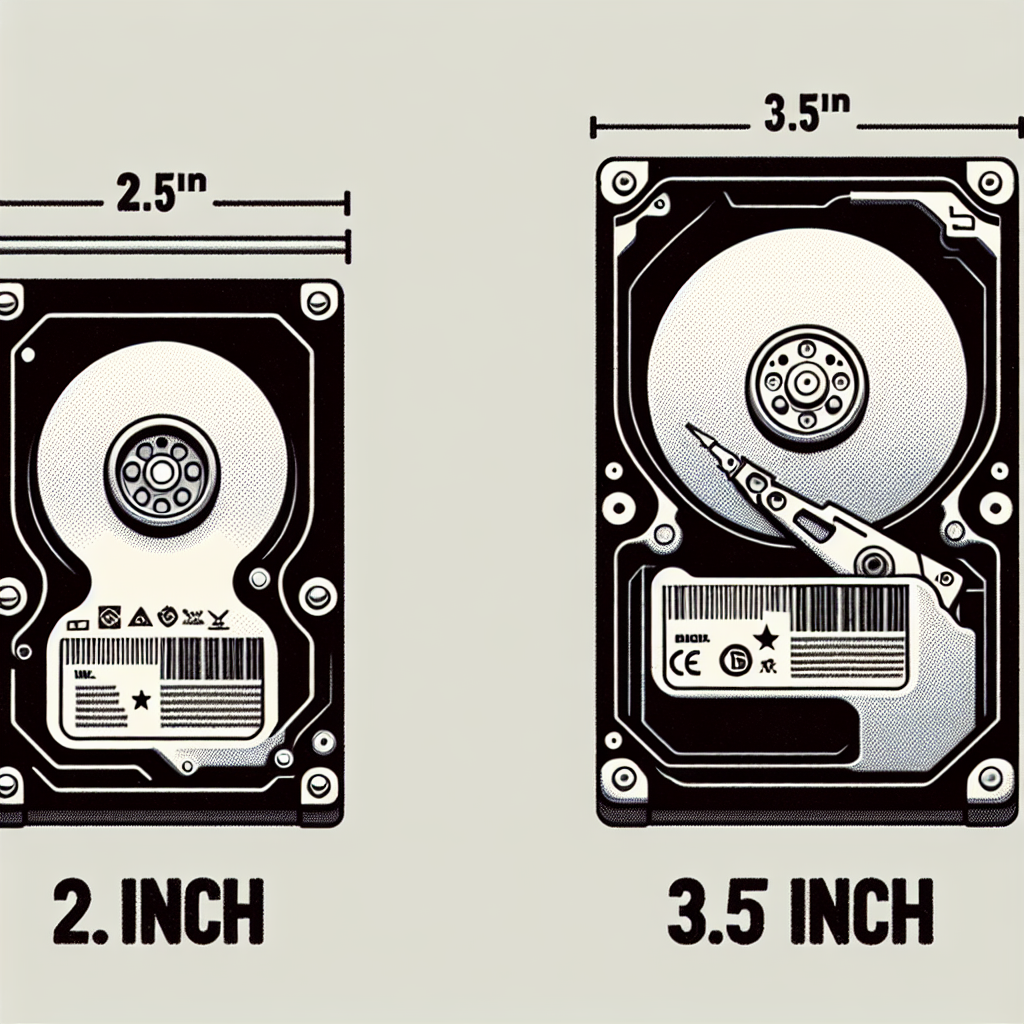In the world of data storage, choosing the appropriate hard drive size can significantly impact your device’s performance and efficiency. Two of the most common sizes available are the 2.5-inch and 3.5-inch hard drives. These are used extensively in various devices, but each serves specific purposes based on their traits. Understanding the differences between these two types will help you make a more informed decision when upgrading or building your system.
Size and Dimensions
The first and most apparent difference is the physical size of the hard drives. The 2.5-inch and 3.5-inch measurements refer to the width of the drives.
| Attribute | 2.5-inch Hard Drive | 3.5-inch Hard Drive |
|---|---|---|
| Width | 2.5 inches (69.85 mm) | 3.5 inches (88.9 mm) |
| Height | 7 – 15 mm | 20 – 26 mm |
| Weight | Approximately 50 – 120 grams | Approximately 400 – 700 grams |
The smaller size of 2.5-inch hard drives makes them ideal for devices with limited space, such as laptops and game consoles. Conversely, the larger 3.5-inch hard drives are typically found in desktops and servers where there’s more room for components.
Storage Capacity
Storage capacity is a crucial factor when selecting a hard drive. Historically, 3.5-inch hard drives have offered higher capacities because their larger size allows for more platters, which are the disks that store data.
- 2.5-inch Hard Drive: Generally, these drives offer capacities ranging from 250 GB to 5 TB. This range is expanding as technology advances.
- 3.5-inch Hard Drive: These drives often range from 500 GB to 16 TB, making them a popular choice for storage-intensive applications.
While both sizes have increased their storage offerings over the years, 3.5-inch drives remain the leaders in high-capacity storage.
Performance
Performance commonly refers to the speed at which a hard drive can read and write data. This is often influenced by the disk’s RPM (revolutions per minute) and the data interface used.
- 2.5-inch Hard Drive: Typically found with speeds of 5400 RPM to 7200 RPM. These are generally slower than their larger counterparts but consume less power, which is beneficial for battery-operated devices like laptops.
- 3.5-inch Hard Drive: Usually available with speeds ranging from 7200 RPM to 10,000 RPM or higher. These drives offer faster data access and are suitable for tasks requiring high throughput, such as gaming and data centers.
Additionally, advancements like SSDs (Solid State Drives) have increased performance options within the 2.5-inch category, offering substantially faster speeds than traditional mechanical drives.
Power Consumption
Power consumption is another critical consideration, particularly for portable devices where battery life is a concern.
- 2.5-inch Hard Drive: These drives are designed to be energy-efficient, typically consuming between 1.5 to 3 watts during operation. This low power draw is a major reason they are used in laptops and external USB drives.
- 3.5-inch Hard Drive: These drives consume significantly more power, often ranging from 6 to 10 watts or higher. This makes them less ideal for battery-powered devices but perfectly suitable for desktop setups where power supply is not a constraint.
Durability and Reliability
Both 2.5-inch and 3.5-inch hard drives are built to be resilient, but their durability can differ based on usage and handling conditions.
- 2.5-inch Hard Drive: These are generally more shock-resistant and better suited for portable devices that may experience movement or bumps.
- 3.5-inch Hard Drive: While robust, these drives are intended for stationary use and are more vulnerable to physical shocks.
Use Cases
Understanding where and how each hard drive type excels can help you decide which is more appropriate for your needs.
- 2.5-inch Hard Drive: Ideal for laptops, external storage devices, gaming consoles, and ultrabooks due to their compact size, lower power usage, and adequate performance for everyday tasks.
- 3.5-inch Hard Drive: Best suited for desktop computers, NAS (Network Attached Storage), and servers where higher capacity and performance are critical factors.
Cost
Cost is often a determining factor in the choice between 2.5-inch and 3.5-inch hard drives.
- 2.5-inch Hard Drive: These tend to be more expensive per gigabyte compared to 3.5-inch drives, mainly due to their compact design and lower production numbers.
- 3.5-inch Hard Drive: Generally, these drives offer a lower cost per gigabyte, providing a more economical solution for large storage needs.
Conclusion
When deciding between a 2.5-inch and a 3.5-inch hard drive, your choice should align with your device’s requirements and your primary use cases. If you need a compact, energy-efficient drive for a laptop or portable device, a 2.5-inch hard drive is likely your best bet. On the other hand, if you require substantial storage and faster read/write speeds for a desktop or server, a 3.5-inch hard drive will serve you better. By considering factors such as size, capacity, performance, power consumption, and cost, you can make an informed decision that best suits your storage needs.

